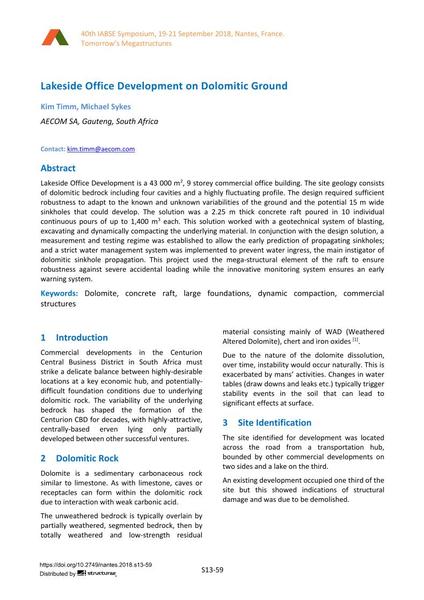Lakeside Office Development on Dolomitic Ground

|
|
|||||||||||
Détails bibliographiques
| Auteur(s): |
Kim Timm
(AECOM SA, Gauteng, South Africa)
Michael Sykes (AECOM SA, Gauteng, South Africa) |
||||
|---|---|---|---|---|---|
| Médium: | papier de conférence | ||||
| Langue(s): | anglais | ||||
| Conférence: | IABSE Symposium: Tomorrow’s Megastructures, Nantes, France, 19-21 September 2018 | ||||
| Publié dans: | IABSE Symposium Nantes 2018 | ||||
|
|||||
| Page(s): | S13-59 | ||||
| Nombre total de pages (du PDF): | 8 | ||||
| DOI: | 10.2749/nantes.2018.s13-59 | ||||
| Abstrait: |
Lakeside Office Development is a 43 000 m², 9 storey commercial office building. The site geology consists of dolomitic bedrock including four cavities and a highly fluctuating profile. The design required sufficient robustness to adapt to the known and unknown variabilities of the ground and the potential 15 m wide sinkholes that could develop. The solution was a 2.25 m thick concrete raft poured in 10 individual continuous pours of up to 1,400 m³ each. This solution worked with a geotechnical system of blasting, excavating and dynamically compacting the underlying material. In conjunction with the design solution, a measurement and testing regime was established to allow the early prediction of propagating sinkholes; and a strict water management system was implemented to prevent water ingress, the main instigator of dolomitic sinkhole propagation. This project used the mega-structural element of the raft to ensure robustness against severe accidental loading while the innovative monitoring system ensures an early warning system. |
||||
